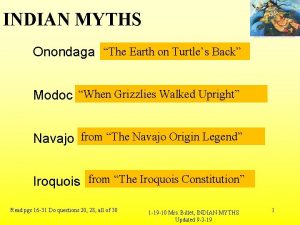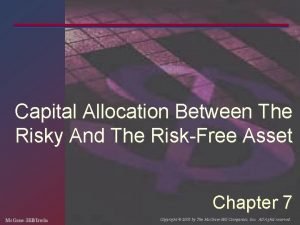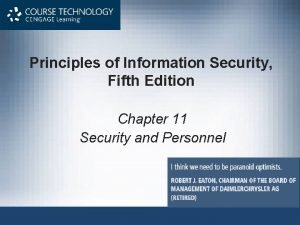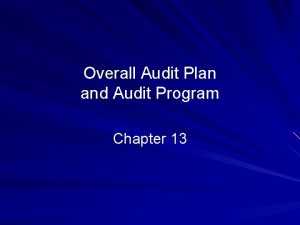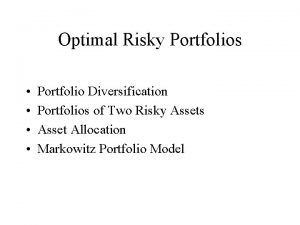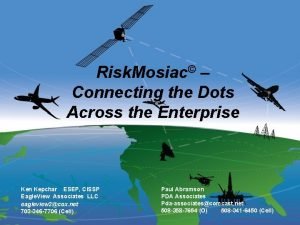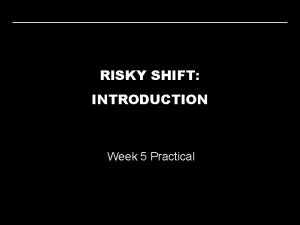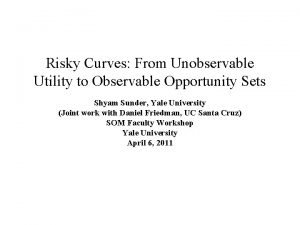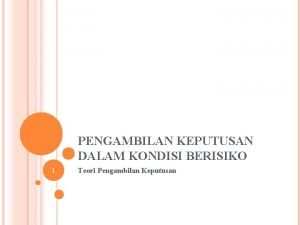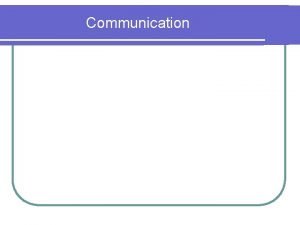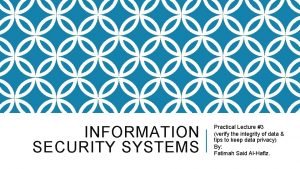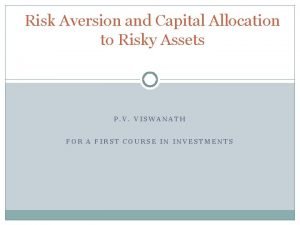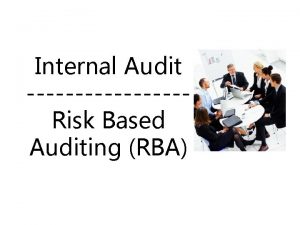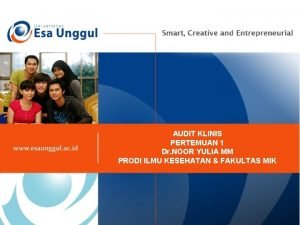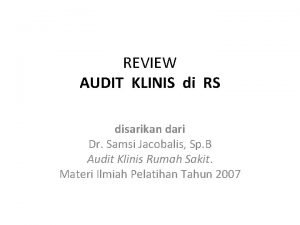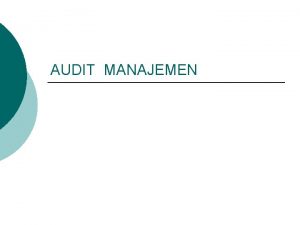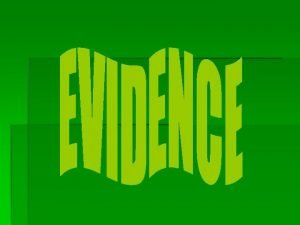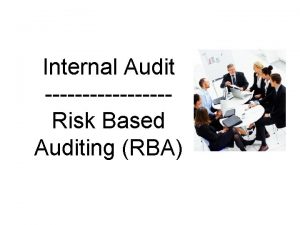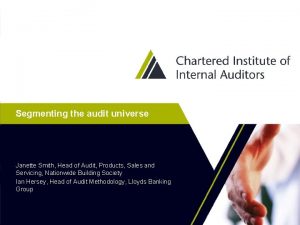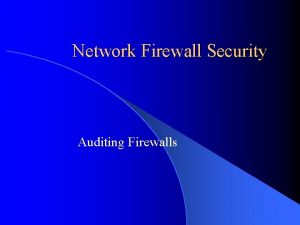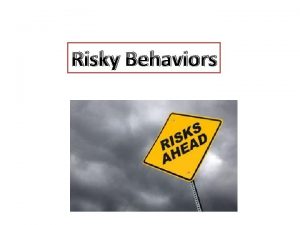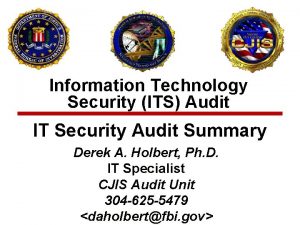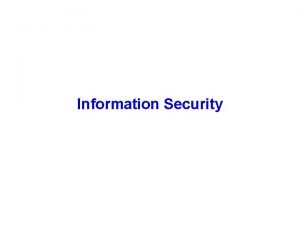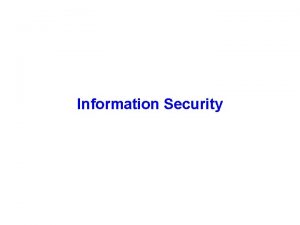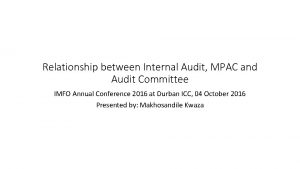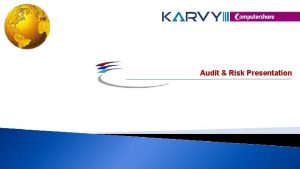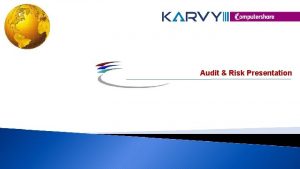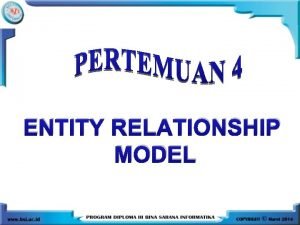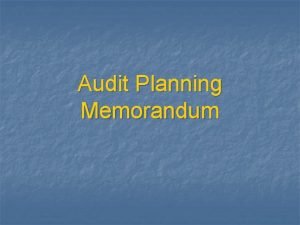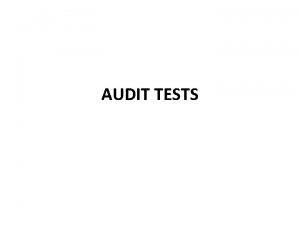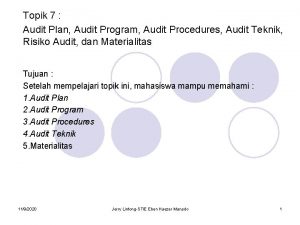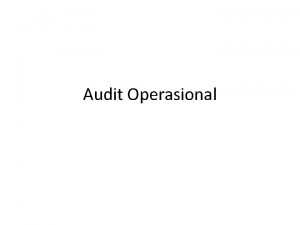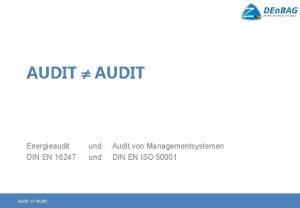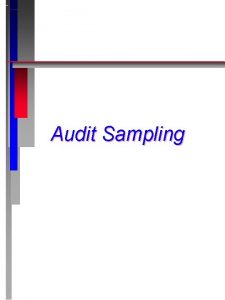Risky Relationship How Audit and Information Security Can






























- Slides: 30

Risky Relationship? How Audit and Information Security Can Work Together • • • Tina Thorstenson - Deputy CIO, Arizona State University Mark Ruppert – Chief Audit Executive, Northern Arizona University Michael Zimmer - CISO, Northern Arizona University Lanita Collette – CISO, University of Arizona Sean Hagan – CISO, Yavapai College

ONE UNIVERSITY / MANY PLACES ▪ Metropolitan Phoenix AZ (5 Campuses), Washington, D. C. , Havasu City, AZ, Santa Monica, CA, & Global Locations “NEW AMERICAN UNIVERSITY” CHARTER RECENT RECOGNITION “Top 1% of world’s prestigious universities” - Times Higher Education “#5 in graduation employability” -Wall Street Journal “#1 chosen by international students” –Institute of International Education BY THE NUMBERS ▪ 119 K Students – ~86% 1 st Year Retention! ▪ 15 K Employees (3, 600 Faculty) ▪ $604 M Annual Research Expenditures COLLABORATIONS ▪ Starbucks (2014) ▪ Mayo Clinic Alliance (2016) ▪ Adidas/ASU Global Sports Alliance (2017) ▪ Uber (2018) ABOUT ME ▪ ▪ ▪ TINA THORSTENSON Deputy CIO & CISO Joined ASU in 2006 Joined Higher Education in 1995 Industries: Transportation & Higher Education

Michael Zimmer: Director, Information Security; 23 yrs Higher Ed IT Info. Sec: 7 full time, 1 -2 students, plus me; SOC, IAM, Compliance Mark P. Ruppert: Chief Auditor; CPA, CISA Internal Audit: 3 full time

45, 217 Students 16, 000+ Employees $622 M Research Expenditure Land-grant university Two medical schools 300+ Majors Lanita Collette, CISO 19 years higher ed tech leadership, 7 years CISO experience Joined UA in 2017

• • • Yavapai College 7, 400 Students Residential CC 6 Campuses No Parking Fees! Bigger than MA 2 IS FTE, 0 IA FTE

Does your institution have formal internal audit FTE staff or contract staff to focus on IT-related audits? www. slido. com – event code #2806

If you have internal audit, does your enterprise technology department or security team work together to plan the IT audit focus areas, or just respond when audits hit? www. slido. com – event code #2806

Comparing Resources YC NAU Uof. A ASU 2 8 14 25 Security Operations Yes Yes Identity/Access Management Yes No Yes ISO Program - Training Yes Yes Compliance/Risk Assessment Yes Yes Internal Audit FTE 0 3 5 5 IT Department FTE 29 192 324 550 Student Headcount 7314 31, 051 45, 217 103, 203 Info. Sec FTE

Differences & Similarities • Audited by the Arizona Office of the Auditor General • Information Security program size and maturity • Internal Audit team size and maturity • We all face, and need to manage, similar threats, risks, regulations

Risk Management 101 – What is a Risk? Where is the real risk? • Shark attack? Mode of travel / strength of the rope? Ability of the traveler? Value at the other side? • Decision to walk across? COSO defines “risk” as: “The possibility that events will occur and affect the achievement of strategy and business objectives. ” NIST defines “risk” as: “A function of the likelihood of a given threat-source exercising a particular potential vulnerability, and the resulting impact of that adverse event on the organization. ” Thus, “risk” can be positive or negative. And, many events occur regardless of decisions we make.

Assessing & Managing Risks Many paths to assessing and managing risk - some institutions have Internal Audit, some do not, and some who do lack an established relationship between IA and IT. Managing risk requires coordination across the university that starts from the top. Tone from the top: Set expectations Align culture and risk tolerance Implementation Teams: Mobilize to coordinate across business functions or between business/research/education

ASU IT Risk Assessment Process University-wide ● Approximately 34 departments ● Coordinated with external firm & internal audit 3 -year Continuous Improvement Cycle ● Data driven, with self assessment component ● Address top items of concern across ASU ● 1: 1 CISO & Dean/Department Head discussion Rinse & Repeat ● Stable, repeatable, action-oriented

ASU Risk Assessment Department Goals Leverage Technologies Security Awareness GOAL: Risk. Sense score above 750 by June 2019 GOAL: 100% Faculty, Staff & Student Workers trained End User Devices Continuity of Operations GOAL: 100% of devices managed compliant across identified security controls GOAL: Test continuity of operations plans at least annually

ASU Information Security Lifecycle

Does your institution have an Enterprise Risk Management program in place? www. slido. com – event code #2806

NAU: IA & IT ERM Risk Assessment Process 1. Establish Context • What are your NAU Objectives? • How do they support NAU Strategy? • What are the key internal and external influences on these objectives? • What are the latest emerging issues? 2. Risk Identification • What major events or changes might impact ability to meet objectives? • What might be pursued to improve ability to meet or exceed objectives? • For each “event” identify source(s), cause(s) and consequence(s)/ impact. 3. Risk Analysis • How likely is the event or change to occur (short term 6 to 18 months and longer term)? • How will the risk impact the ability to meet objectives? • Apply a risk score using NAU scoring templates. 4. Risk Evaluation • Does risk significance make sense when reviewing all risks relative to each other? • Which risks should be prioritized? • Which risks must or will we simply accept? • Who owns or should own the risk? 5. Response / Action Plans • How are the challenges being addressed already; how will they be addressed going forward? • How are the opportunities already being pursued; will or how will they be pursued going forward? • What resources are necessary to support these action plans? 6. Monitor, Review, Reassess & Report • Periodically check status of risk relative to internal and external changes, effect of actions plans, etc. then reassess the risk. • Report updated risk information to ERMOC. 16

NAU ERM: Challenge & Opportunity Focus

UA Information Security Risk Assessment Process

UA Shared Responsibility Model - What’s Your Role? Senior Campus Leaders Information/Risk Owners Risk Managers Security Managers System and Process Owners


Lower Resourced, Not Lesser Engaged Smaller schools or those with fewer resources don’t have to put off formal risk assessment, internal audit, and related efforts. What We Don’t Have What We Do Have Internal Audit A “robust” relationship with state auditors, open communication with peers, maturing “internal” internal audit efforts. Risk Manager Routine risk assessment efforts, table top exercises, participation in real-world incident response (mutual aid) Legal Counsel Someone who stayed at a Holiday Inn Express last night Compliance Challenges. . . Large Info. Sec Team Broad, strong relationships with other State/Local Government; ISAC Memberships; An educated and engaged employee community

Evolution of Risk Assessment for YC Our formal and informal risk assessment efforts guide many of our tactical and strategic initiatives; they form the basis for our still-developing internal audit efforts. 2015 DR/BC Security Awareness 2016 2017 2018 DR/BC Security Awareness Int/Ext Vuln Scans Phishing Tests Positive Enrollment Data Inventories “GLBA Routine RA” 2019 DR/BC Security Awareness Int/Ext Vuln Scans Phishing Tests Positive Enrollment Data Inventories “GLBA Routine RA” Business Impact Analysis Table Top Exercises (TTX) Real-World IR

(R)Evolution in Data Collection & Use With small teams, flat budgets, and increasing demands, good isn’t good enough. Process refinement, improvement and other efficiency gains become critical to staying afloat in a sea of change. 2017 2018 2019 2020 Data Collected: SDI SDI, BIA, VMD, VMP? Automation: None Some (Reporting Only) More. . . Most. . . Burden: High (3+ Hours Per) Moderate (2+ Hours Per) Lower (1 -2 Hours Per) TBD (Low? ) Data Value: Very High Low Moderate TBD (High? )

Defining “Audit” @ YC Evaluating a system or process against a documented standard, framework, or industry best practice. Or. . . Are we really doing what we think (or tell others) we’re doing?

Auditing Without Auditors Challenges: • • Eliminating implicit bias/assumptions Do the thing or audit the thing? Possible adversarial perceptions from colleagues Increasing Importance (HLC Accreditation) Examples of “Internal” Auditing at YC: • • • Administrative Privilege (local workstation admin access) Shared Secret (employee separation/secret rotation) DNS Audit (external DNS only) Data Inv. (how truthful accurate are the SDI responses? ) NIST CSF Framework Gap Analysis

Challenges & How to Overcome Them • Differences in Approach, Duties, Obligations • Different Maturity Levels, Knowledge, Skills • Different Technologies • Disagreements

Info. Sec-Audit Collaboration Successes • Audits • Improved IT Governance, Risk, Compliance • Key Performance Indicators and Metrics • Strategic Planning and Roadmaps • Policies, Standards, Procedures, Guidelines • Improved focus on strong yet balanced IT security controls • Coordinated representation of IT Security Risks, Solutions, Progress and Context to Executive & Board Leadership

What’s on the horizon and how can Audit or Assessment practices help?

Session Evaluations There are two ways to access the session and presenter evaluations: 1 2 In the online agenda, click on the “Evaluate Session” link From the mobile app, click on the session you want from the schedule > then scroll down or click on the associated resources > and the evaluation will pop up in the list

Questions? Contact Information Tina Thorstenson: Tina. Thorstenson@asu. edu Mark Ruppert: Mark. Ruppert@nau. edu Michael Zimmer: Michael. Zimmer@nau. edu Lanita Collette: lcollette@arizona. edu Sean Hagan: sean. hagan@yc. edu NOTE: This presentation leaves copyright of the content to the presenter. Unless otherwise noted in the materials, uploaded content carries the Creative Commons Attribution 4. 0 International (CC BY 4. 0), which grants usage to the general public, with appropriate credit to the author.
 Privatesecurity
Privatesecurity Visa international security model diagram
Visa international security model diagram Cnss model 27 cells example
Cnss model 27 cells example Whom do the onondaga credit with the creation of earth
Whom do the onondaga credit with the creation of earth Capital allocation line
Capital allocation line The information security function can be placed within the
The information security function can be placed within the Limitations of auditing
Limitations of auditing Overall audit plan
Overall audit plan Optimal complete portfolio formula
Optimal complete portfolio formula Risky mosiac
Risky mosiac The risky shift
The risky shift Risky adventure sports
Risky adventure sports Risky curves clothing
Risky curves clothing Pengambilan keputusan dalam kondisi beresiko
Pengambilan keputusan dalam kondisi beresiko Risky behaviour defination
Risky behaviour defination Lab – discover your own risky online behavior
Lab – discover your own risky online behavior Risky sports
Risky sports Capital allocation to risky assets
Capital allocation to risky assets Perbedaan audit konvensional dengan audit berbasis risiko
Perbedaan audit konvensional dengan audit berbasis risiko Audit rekam medis adalah
Audit rekam medis adalah Beda audit medis dan audit klinis
Beda audit medis dan audit klinis Penyelesaian audit dan tanggung jawab pasca audit
Penyelesaian audit dan tanggung jawab pasca audit Konsep dasar audit manajemen
Konsep dasar audit manajemen Perbedaan prosedur audit top-down dengan bottom-up
Perbedaan prosedur audit top-down dengan bottom-up Perbedaan audit konvensional dengan audit berbasis risiko
Perbedaan audit konvensional dengan audit berbasis risiko Audit is derived from the latin word which is
Audit is derived from the latin word which is Audit universe vs audit plan
Audit universe vs audit plan Wireless security in cryptography
Wireless security in cryptography Electronic commerce security
Electronic commerce security Icao full form
Icao full form Firewall security audit
Firewall security audit



